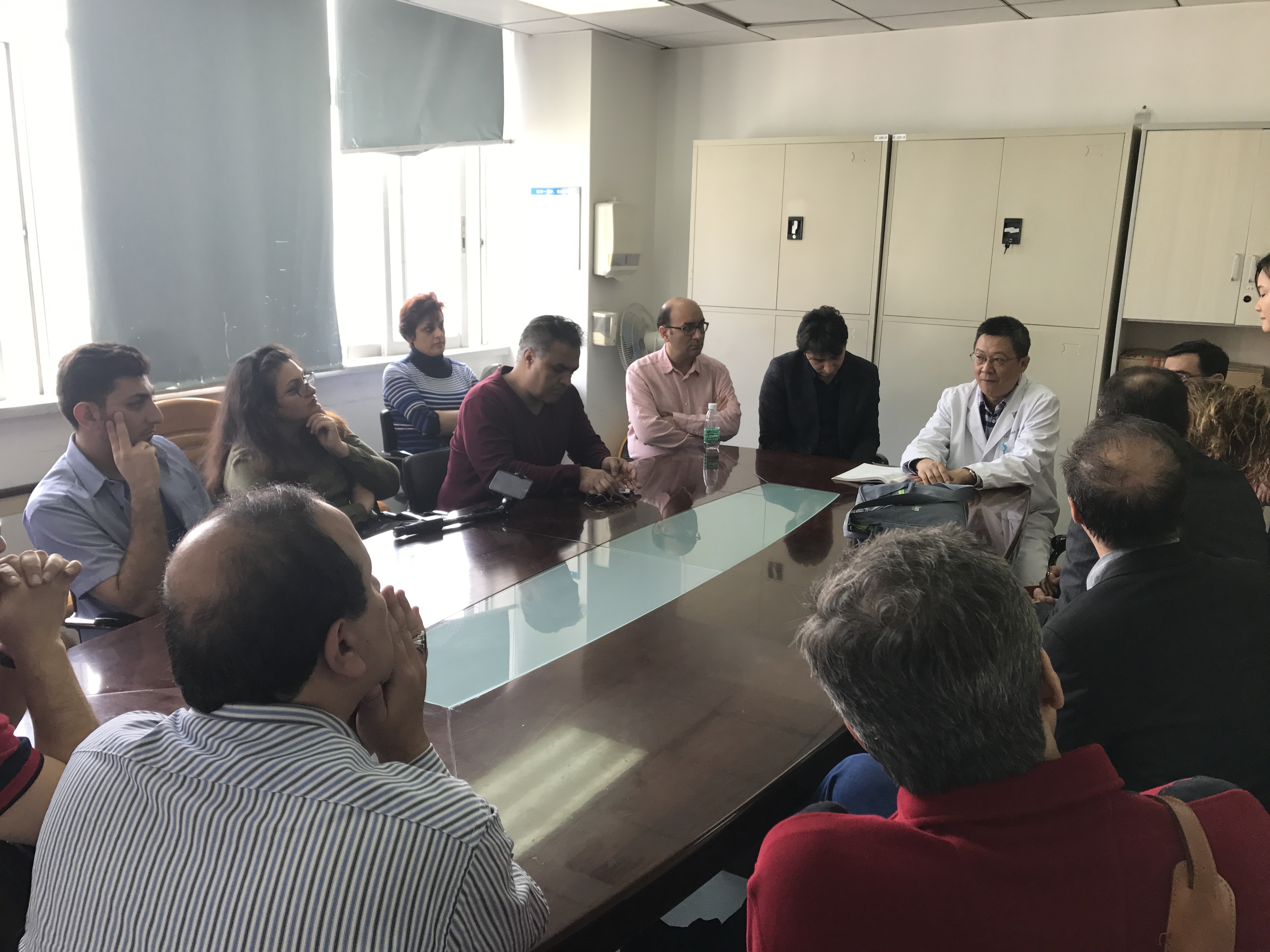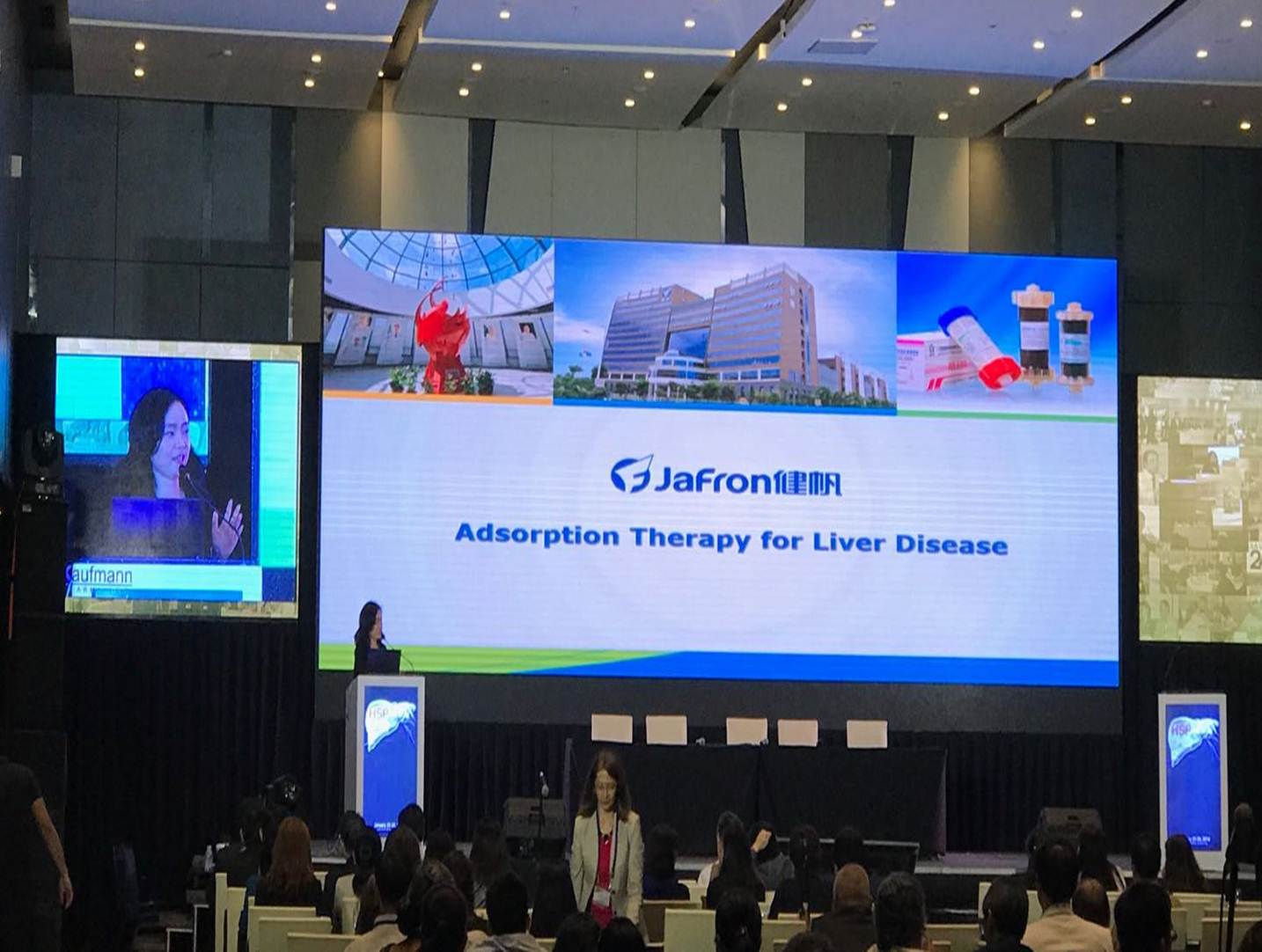Webinar of Hemoadsorption in Poisoning and Drug Overdose Academic Perspectives
Author:Sherry Zhang Date:2024-10-21
Hemoperfusion in Severe Intoxications
Prof. Patrick Honoré
Professor and specialist of Critical Care

The application of hemoperfusion in poisoning have been initiated early with charcoal cartridges, but due to its wide range side effects such as the embolism, DIC and loss of blood component and the narrow clinical application only with some poisoning and drug overdose with not obvious clinical outcomes leads for trying a new sorbent.
Jafron HA230 cartridge with very good compatibility and efficacy and very large adsorption surface is to detoxify the patient not only with toxin with molecular weight of 500Da-10KDa but also for lipophilic and high protein binding substances.
The spectrum for use of this cartridge not only to remove the overdosed drugs but also can be used for pesticide, biotoxins and industrial toxins removal.
In the past, the prognosis of patients with paraquat poisoning not detected with standard therapy even with CRRT treatment, but now as the new publication on blood purification journal of using HA230 on paraquat poisoning showed rapid decrease in paraquat levels in hemoperfusion group compared to conservative treatment and also showed positive changes on survival.
The publication of Carbamazepine overdose treated with Jafron sorbent showed better Glasgow Coma score especially for patients treated earlier in emergency room, the mortality was also significantly lower in HP group.
A case for TCAs - imipramine self-poisoning: patient enrolled to ICU six hours after ingestion, the patient was unconscious, complicated cardiogenic shock requiring Veno-Arterial ECMO, under V-A ECMO the patient was hemodynamically stable, she further developed severe rhabdomyolysis and oliguria, continuous venovenous hemodiafiltration (CVVHDF) with hemoperfusion was started 24 hours after ingestion, three hemoperfusion filters were used . Blood levels of imipramine and desimipramine were measured every 6 hours. On average, post-filter imipramine levels were 45% lower than pre-filter levels and post-filter desimipramine levels were 32% lower than pre-filter levels. Cardiac function improved and ECMO was explanted after 4 days. The patient further had severe ARDS resolving spontaneously over the coming days. Neurologic outcome was favorable despite early myoclonus during the first days. The patient regained consciousness on the fifth day after admission.
In conclusion: HA230 could reduce the concentration of highly albumin bounded drugs such as: Venlafaxine, Tricyclic antidepressant, Carbamazepine and Digoxin. It also helps in clearance of Pesticides (Paraquat, Acute severe organophosphate poisoning [ASOP]). The early application can prevent the use of VA-ECMO. It can be lifesaving under these conditions.
——————————————————————————————————
Hemoperfusion with HA230 Cartridge for Venomous Snake Bites
Prof. Nagarajan Ganapathy
Specialist in Clinical Toxicology & Snake Envenomation

Snake venoms are cocktails of enzymes and non-enzymatic proteins.
Cytotoxins, cardiotoxins, neurotoxins, selective enzymes and low molecular weight compounds in the poisonous snake’s venom are well within the range of molecular weight of toxins that can be removed by acute poisoning cartridge HA230
Some of snakes’ venom is not neutralised by the standard Anti-Snake Venom (ASV), and without knowing the exact snake envenomation if we use the ASV it is ineffective and expensive so we can apply the acute poisoning cartridge HA230 for poison removal.
Hemoperfusion can be used in haemodialysis or CRRT machine, three cycles, the second cycle after 12hrs from the first cycle, and the third is after 24 hrs.
The study we performed using hemoperfusion HA230 cartridge along with standard treatment for 15 patients of severe cases of venomous snake bites showed:
1) It is safe and reliable and can directly eliminate the toxins in the patients’ blood so as to reach the objective of blood purification
2) It features substantial curative effects
3) Significant reducing lactate and inflammatory markers
4) Quick time for the platelets returning to normal level
5) Quick subsiding of swelling as well as short hospitalization time
6) So, it is useful to incorporate in clinical treatment of venomous snake bites
In conclusion: the advantages of hemoperfusion using HA230 cartridge:
Usually less dose anti-snake venom is required, rapid reduction in swelling and avoids Compartmental Syndrome, correction of Venom Induced Consumption Coagulopathy (VICC), reduces the frequency of dialysis in snake bite induced Acute Kidney Injury (AKI), correction of Snake Bite induced sepsis and septic shock, it reduces the patient days on ventilator support, overall significantly reduces morbidity and the cost of hospital stay.
——————————————————————————————————
HP therapy on OPP and drug overdose
Prof. Shahed Omar
Professor and specialist in Critical Care

Organophosphate poisoning (OPP) pesticides are widely used in the agricultural sector. The WHO estimates 200 000 deaths/year around the globe. The previous studies demonstrated increasing the length of ICU stay and the cost of treatment/year when comparing 2012 to 2017 by 2.6 and 31-fold respectively, so finding a way to shorten ICU stay is needful. The resins are styrene beads (benzene structure), heat stable, lipophilic, more stable (not likely to embolize) and with less thrombocytopenia
We already recruited 15patients for study of hemoperfusion for organophosphate poisoning in critically ill patients- A randomized trial, the primary results are optimizing.
Case of OPP: a16-years-old, female, presented with a history of deliberate ingestion of organophosphate poison, in the emergency unit the patient required both circulatory and ventilatory support, a cholinergic toxidrome was observed, she was admitted to ICU for further management, AP (atropine) was used but without a good effect, the patient’s improved intermediate syndrome and the levels of cholinesterase, GSC and muscle power is very low, after 2 sessions of HA230, patient’s GCS and muscle power and cholinesterase levels get improved, the patient then decannulated and discharged safely.

Case of calcium channel blocker: a 28-years-old, male, presented to ICU from casualty following an overdose with an unknown quantity of calcium channel blocker-amlodipine. On arrival, he required ionopressor support. He did not respond to the widely-accepted stepwise management approach for calcium channel blocker toxicity, after the first hemoperfusion with HA230, patients hemodynamic stabilized, MAP elevated and inotropes need reduced, the patient weaned of insulin, calcium infusion and methylene blue, after performing the second session, the concentration of amlodipine in the second cartridge was 40mg/L compared to 80 mg/L in the first cartridge, showing significant reduction of amlodipine levels after HP treatment, patient’s MAP elevated to normal range, and the patient was stopped inotropes and discharged from the hospital successfully.
In conclusion: The application of hemoperfusion on OPP showed significant improving in patient hemodynamic status, regain of cholinesterase, muscles powerful and GCS. Also, when used for amlodipine overdose showed significant from circulation and stabilize the hemodynamic and reduce the inotrope use.
For more details you can follow the whole webinar by this link:
















